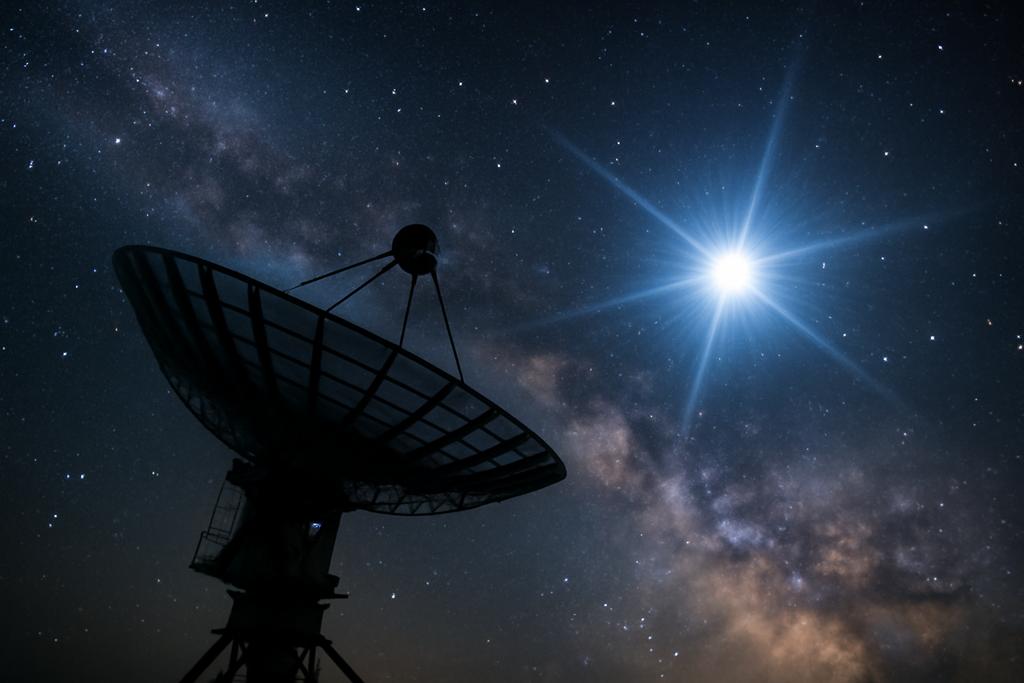The Enigma of Fast Radio Bursts
Fast Radio Bursts (FRBs) are fleeting cosmic events—millisecond-long bursts of radio waves originating billions of light-years away. Imagine the universe as a vast, crackling radio, occasionally spitting out these powerful, enigmatic signals. Since their discovery in 2007, astronomers have grappled with understanding their origins. Are they all generated by the same underlying process? Or do they represent a diverse family of celestial phenomena?
One-Offs and Repeaters: A Tale of Two Bursts
FRBs fall into two broad categories: repeaters and one-offs. Repeaters, as the name suggests, send out multiple bursts. One-offs, on the other hand, are single events, detected only once. But within the one-offs, a subset has a peculiar multi-structural nature—showing multiple bursts within the single detection. This raises a compelling question: could these multi-structural one-offs actually be repeaters, just not yet fully characterized due to observational limitations?
Unlocking Cosmic Clues: A New Study
Researchers at the National Astronomical Observatories, Chinese Academy of Sciences, along with collaborators at several other institutions, including the University of Chinese Academy of Sciences and Central China Normal University, sought to uncover the hidden relationships within these enigmatic bursts. Led by Yu-Hao Zhu, Chen-Hui Niu, and Di Li, the team delved into data from the Canadian Hydrogen Intensity Mapping Experiment (CHIME)/FRB Catalog 1—a treasure trove of information containing data on hundreds of FRBs.
Cosmic Event Rates and Star Formation
To investigate the nature of these bursts, the researchers focused on the relationship between the rate of FRB events and the rate of star formation in the universe. The idea is that if FRBs are closely tied to the birth of stars, their rates should track each other closely across cosmic history. They also looked at how the rate of FRB events changes with redshift—a measure of how far away in the universe an object is and, therefore, how far back in time we are looking.
Their analysis revealed some fascinating results. While the event rates of all types of FRBs—one-offs, repeaters, and multi-structural one-offs—showed a similar trend, it was not a simple match for the star formation rate. Instead, the trend of the rate of FRB events across cosmic time seems to better align with the cosmic stellar mass density evolution. This suggests a more intricate connection between FRBs and the overall evolution of stars and galaxies in the universe than simply their formation.
Distinguishing the Bursts: Statistical Tests
To further distinguish between the different FRB types, the researchers employed statistical tests—the Kolmogorov-Smirnov (K-S) test and the Mann-Whitney-Wilcoxon (M-W-W) test—to analyze various properties of the bursts, including the time spread and frequency width of the signals. These tests revealed significant differences between repeaters and both one-offs and multi-structural one-offs. The differences hint at variations in the underlying physical mechanisms that produce the bursts.
A Cosmic Puzzle: Implications and Future Directions
This study presents a compelling case for a deeper connection between FRB event rates and cosmic stellar mass density. The fact that the multi-structural one-offs show statistical differences from repeaters adds another layer of complexity to the cosmic puzzle of FRBs. Are these one-offs merely a trick of the light, so to speak, or do they represent a distinct, hidden population waiting to be uncovered? This research sheds valuable light on the diverse origins of FRBs, suggesting a more nuanced story than previously assumed.
However, it’s important to acknowledge that these findings are based on a currently finite data set. As more FRBs are detected and studied, particularly longer observational campaigns to classify more one-offs, a richer picture will surely emerge. The findings here certainly suggest that multi-structural one-offs could potentially be repeaters—a provocative suggestion which requires further investigation with larger datasets.
This study highlights the ongoing effort to unravel the mysteries of FRBs. Each new discovery and analysis deepens our understanding of the universe’s dynamic processes and reveals the surprising complexity hidden within its energetic cosmic events. Further research, with expanded datasets, will be crucial to confirm and refine these initial observations. The study by Zhu et al. provides a roadmap for future explorations in the fascinating field of FRB research.










